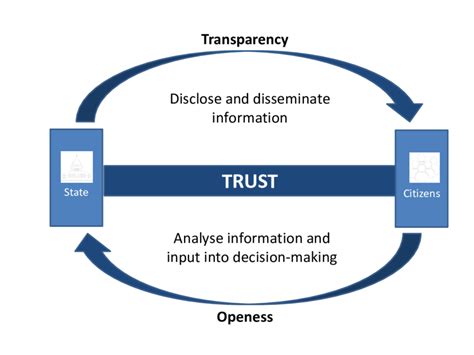
New hydration guidelines suggest individuals should ditch the rigid “eight glasses a day” rule and instead focus on thirst cues and personalized hydration strategies based on activity levels, climate, and overall health.
The long-standing recommendation to drink eight glasses of water daily is now being challenged by experts who advocate for a more intuitive and individualized approach to hydration. According to recent findings, overhydration can be just as detrimental as dehydration, leading to electrolyte imbalances and other health complications. The emphasis is now shifting towards listening to your body’s signals and adjusting fluid intake accordingly.
“There’s really no one-size-fits-all answer for how much water people should be drinking,” states Dr. Tamara Hew-Butler, an exercise scientist at Wayne State University in Detroit, who has extensively researched the effects of overhydration. “It really depends on the individual, their activity level, the climate they live in, and their overall health.” This perspective marks a significant departure from the traditional, generalized advice that has been widely circulated for years.
The risks associated with blindly adhering to the eight-glasses-a-day rule include hyponatremia, a condition characterized by dangerously low sodium levels in the blood. This can occur when excessive water intake dilutes the body’s electrolytes, leading to symptoms such as nausea, headache, confusion, and in severe cases, seizures, coma, and even death. Athletes, in particular, are susceptible to hyponatremia due to the combination of prolonged sweating and excessive fluid consumption during endurance events.
The new hydration guidelines emphasize the importance of thirst as the primary indicator of the body’s need for fluids. “Thirst is a very good indicator of when you need to drink,” explains Dr. Hew-Butler. “Your body is very good at regulating its fluid balance, and if you’re thirsty, you should drink.” This approach encourages individuals to be more mindful of their body’s signals and to avoid drinking excessive amounts of water simply because they believe they should.
Beyond thirst, other factors can influence an individual’s hydration needs. Physical activity, for example, increases fluid loss through sweat, necessitating a higher fluid intake. Similarly, hot and humid climates can lead to greater fluid loss, requiring individuals to drink more to stay adequately hydrated. Certain medical conditions, such as diabetes and kidney disease, can also affect fluid balance and may require specific hydration recommendations from a healthcare professional.
The sources of hydration also extend beyond water itself. Fruits, vegetables, and other beverages, such as tea, coffee, and juice, can all contribute to daily fluid intake. While caffeinated beverages were once thought to be dehydrating, research has shown that they can be hydrating when consumed in moderation. However, it’s important to be mindful of the sugar content in some beverages, as excessive sugar intake can have negative health consequences.
The updated recommendations encourage a more balanced and personalized approach to hydration, taking into account individual needs and preferences. Rather than rigidly adhering to a fixed daily water intake, individuals are advised to listen to their bodies, drink when thirsty, and adjust their fluid intake based on activity level, climate, and overall health. This shift in perspective aims to promote optimal hydration while minimizing the risks associated with both dehydration and overhydration.
In-Depth Analysis and Background
The “eight glasses a day” recommendation, while seemingly harmless, lacks scientific backing and has been perpetuated largely through anecdotal evidence and marketing campaigns. Its origin is often attributed to a 1945 Food and Nutrition Board recommendation that suggested adults need about 2.5 liters of water per day, but this statement was misinterpreted. The original recommendation included water from all sources, including food, not just drinking water. This nuance was often overlooked, leading to the widespread belief that everyone should drink eight glasses of water daily, regardless of their individual needs.
The human body is a complex system capable of regulating fluid balance with remarkable precision. The kidneys play a central role in this process, filtering blood and excreting excess water and electrolytes in the urine. Hormones such as antidiuretic hormone (ADH) also contribute to fluid balance by regulating the amount of water reabsorbed by the kidneys. When the body is dehydrated, ADH levels increase, causing the kidneys to conserve water and produce more concentrated urine. Conversely, when the body is overhydrated, ADH levels decrease, leading to increased urine production.
Thirst is a key physiological mechanism that helps regulate fluid intake. It is triggered by changes in blood osmolality, which refers to the concentration of solutes (such as sodium) in the blood. When blood osmolality increases, it signals that the body is becoming dehydrated, prompting the sensation of thirst. The hypothalamus, a region of the brain responsible for regulating various bodily functions, plays a crucial role in thirst regulation.
However, thirst is not always a reliable indicator of hydration status, particularly in certain populations. Older adults, for example, may experience a diminished sense of thirst, making them more vulnerable to dehydration. Similarly, individuals with certain medical conditions or those taking certain medications may also have impaired thirst mechanisms. In these cases, it may be necessary to pay closer attention to other signs of dehydration, such as dark urine, infrequent urination, and dizziness.
Overhydration, or hyponatremia, is a potentially life-threatening condition that occurs when sodium levels in the blood become dangerously low. Sodium is an essential electrolyte that plays a critical role in regulating fluid balance, nerve function, and muscle contractions. When the body takes in too much water, it can dilute the sodium concentration in the blood, leading to hyponatremia.
Symptoms of hyponatremia can range from mild to severe, depending on the severity of the sodium imbalance. Mild symptoms may include nausea, headache, and confusion. More severe symptoms can include seizures, coma, and even death. Athletes, particularly those participating in endurance events, are at increased risk of hyponatremia due to the combination of prolonged sweating and excessive fluid consumption.
The new hydration guidelines emphasize the importance of personalized hydration strategies, taking into account individual needs and preferences. This approach recognizes that there is no one-size-fits-all solution for hydration and that fluid intake should be tailored to individual circumstances. Factors to consider when developing a personalized hydration plan include activity level, climate, overall health, and individual preferences.
For individuals who engage in regular physical activity, it is important to drink enough fluids to replace the water lost through sweat. The amount of fluid needed will vary depending on the intensity and duration of the activity, as well as the climate. A general guideline is to drink 16-20 ounces of water or sports drink for every pound of weight lost during exercise.
In hot and humid climates, it is important to drink more fluids to compensate for increased fluid loss through sweat. It is also important to avoid prolonged exposure to the sun and to wear light-colored, loose-fitting clothing to help stay cool.
Certain medical conditions, such as diabetes and kidney disease, can affect fluid balance and may require specific hydration recommendations from a healthcare professional. Individuals with these conditions should consult with their doctor to determine the appropriate fluid intake for their individual needs.
Expanded Context and Expert Opinions
The shift away from the “eight glasses a day” rule reflects a growing understanding of the complexities of human physiology and the limitations of generalized health advice. Experts are increasingly emphasizing the importance of individualized approaches to health and wellness, taking into account the unique needs and circumstances of each individual.
“We’re moving away from these blanket recommendations that apply to everyone, regardless of their individual characteristics,” says Dr. Melinda Manore, a professor of nutrition at Oregon State University. “We’re recognizing that people are different, and their needs are different.”
The new hydration guidelines are based on a growing body of scientific evidence that challenges the conventional wisdom surrounding fluid intake. Studies have shown that thirst is a reliable indicator of hydration status for most people and that excessive water intake can be harmful.
“There’s no evidence to support the idea that everyone needs to drink eight glasses of water a day,” says Dr. Stanley Goldfarb, a nephrologist at the University of Pennsylvania. “In fact, there’s evidence that drinking too much water can be dangerous.”
The emphasis on personalized hydration strategies is also supported by the growing field of precision medicine, which aims to tailor medical treatments to the individual characteristics of each patient. By taking into account individual factors such as genetics, lifestyle, and environment, precision medicine seeks to improve the effectiveness and safety of medical interventions.
The updated recommendations also acknowledge the role of various beverages and foods in contributing to daily fluid intake. While water is an excellent source of hydration, other beverages, such as tea, coffee, and juice, can also contribute to fluid intake. Fruits and vegetables, particularly those with high water content, such as watermelon and cucumbers, can also help keep the body hydrated.
However, it’s important to be mindful of the sugar content in some beverages, as excessive sugar intake can have negative health consequences. Sugary drinks, such as soda and sweetened juices, can contribute to weight gain, tooth decay, and other health problems. It’s generally best to choose water or unsweetened beverages as the primary source of hydration.
The new hydration guidelines represent a significant shift in perspective, moving away from a rigid, one-size-fits-all approach to a more flexible and individualized approach. By listening to their bodies, drinking when thirsty, and adjusting their fluid intake based on individual needs and preferences, individuals can optimize their hydration and promote overall health.
The message is clear: forget the arbitrary number and focus on what your body is telling you. Hydration is a dynamic process that requires a nuanced and personalized approach.
Impact and Implications
The revised hydration guidelines have the potential to significantly impact public health by promoting more informed and effective hydration practices. By debunking the myth of the “eight glasses a day” rule, the new recommendations can help individuals avoid both dehydration and overhydration, leading to improved health outcomes.
For athletes, the shift towards personalized hydration strategies can help optimize performance and reduce the risk of hyponatremia. By paying attention to thirst cues and adjusting fluid intake based on sweat rate and environmental conditions, athletes can ensure they are adequately hydrated without overdoing it.
For older adults, the new guidelines emphasize the importance of monitoring hydration status and taking steps to prevent dehydration. By encouraging regular fluid intake, particularly in hot weather, and by addressing any underlying medical conditions that may affect fluid balance, older adults can reduce their risk of dehydration-related complications.
For healthcare professionals, the revised recommendations provide a more evidence-based approach to advising patients on hydration. By educating patients about the importance of listening to their bodies and tailoring their fluid intake to individual needs, healthcare professionals can promote healthier hydration habits.
The new hydration guidelines also have implications for the food and beverage industry. By promoting water as the primary source of hydration and by encouraging consumers to be mindful of the sugar content in beverages, the recommendations can help shift consumer preferences towards healthier choices.
Overall, the revised hydration guidelines represent a positive step towards promoting more informed and effective hydration practices. By embracing a personalized and evidence-based approach, individuals can optimize their hydration and improve their overall health and well-being.
Practical Tips for Optimal Hydration
- Listen to Your Body: Pay attention to your thirst cues. Drink when you feel thirsty, but don’t force yourself to drink excessive amounts of water.
- Monitor Urine Color: Urine color can be a useful indicator of hydration status. Pale yellow urine generally indicates adequate hydration, while dark yellow urine may indicate dehydration.
- Hydrate Before, During, and After Exercise: Drink fluids before, during, and after physical activity to replace water lost through sweat.
- Choose Water as Your Primary Beverage: Water is the best source of hydration. Limit sugary drinks, such as soda and sweetened juices.
- Eat Hydrating Foods: Include fruits and vegetables with high water content in your diet, such as watermelon, cucumbers, and spinach.
- Be Mindful of the Climate: In hot and humid climates, drink more fluids to compensate for increased fluid loss through sweat.
- Consider Individual Needs: Factors such as activity level, climate, overall health, and individual preferences can influence hydration needs. Consult with a healthcare professional if you have any concerns about your hydration status.
- Don’t Overdo It: Overhydration can be just as harmful as dehydration. Avoid drinking excessive amounts of water simply because you believe you should.
- Sip Throughout the Day: Instead of gulping large amounts of water at once, sip fluids throughout the day to maintain adequate hydration.
- Set Reminders: If you struggle to remember to drink water, set reminders on your phone or computer to prompt you to take a break and hydrate.
FAQ: Rethinking Your Water Intake
- What are the new hydration guidelines?
The new hydration guidelines move away from the rigid “eight glasses a day” rule and emphasize a more personalized approach based on thirst cues, activity levels, climate, and overall health. The focus is on listening to your body and adjusting fluid intake accordingly to avoid both dehydration and overhydration.
- Why is the “eight glasses a day” rule being questioned?
The “eight glasses a day” recommendation lacks scientific backing and is often misinterpreted. It originated from a 1945 recommendation that included water from all sources, including food, not just drinking water. Overhydration can lead to hyponatremia, a dangerous condition with low sodium levels.
- What is hyponatremia, and how is it related to hydration?
Hyponatremia is a condition characterized by dangerously low sodium levels in the blood, often caused by excessive water intake. When the body takes in too much water, it dilutes the sodium concentration, leading to symptoms like nausea, headache, confusion, seizures, and even death. Athletes are particularly at risk due to prolonged sweating and overdrinking.
- How can I determine how much water I should drink?
Listen to your body’s thirst cues. Drink when you feel thirsty. Consider factors like your activity level, the climate you live in, and your overall health. If you exercise, drink enough to replace the water lost through sweat. Monitor your urine color; pale yellow indicates adequate hydration. If you have medical conditions, consult your doctor for personalized advice.
- Besides water, what other sources contribute to my daily fluid intake?
Fruits, vegetables, and other beverages like tea, coffee, and juice can contribute to your daily fluid intake. Choose water or unsweetened beverages as the primary source. Be mindful of the sugar content in sweetened drinks, as excessive sugar can have negative health consequences.
- Are caffeinated beverages dehydrating?
While caffeinated beverages were once thought to be dehydrating, research has shown that they can be hydrating when consumed in moderation. However, it’s important to note that excessive caffeine intake can have other negative effects on health, such as anxiety, insomnia, and increased heart rate.
- How does physical activity affect my hydration needs?
Physical activity increases fluid loss through sweat, necessitating a higher fluid intake. The amount of fluid needed depends on the intensity and duration of the activity, as well as the climate. A general guideline is to drink 16-20 ounces of water or sports drink for every pound of weight lost during exercise.
- What are some signs of dehydration to look out for?
Signs of dehydration can include thirst, dry mouth, dark urine, infrequent urination, headache, dizziness, and fatigue. In severe cases, dehydration can lead to confusion, rapid heart rate, and loss of consciousness.
- Are there any specific populations that need to be more careful about their hydration?
Older adults, individuals with certain medical conditions (such as diabetes and kidney disease), and athletes are populations that need to be more careful about their hydration. Older adults may experience a diminished sense of thirst, making them more vulnerable to dehydration. Individuals with medical conditions may have impaired fluid balance. Athletes need to replace fluids lost through sweat.
- Where can I find more information about personalized hydration strategies?
You can consult with a healthcare professional, such as a doctor or registered dietitian, to develop a personalized hydration plan. You can also find information online from reputable sources, such as the Centers for Disease Control and Prevention (CDC) and the National Institutes of Health (NIH). Look for evidence-based information and avoid relying on anecdotal advice.









